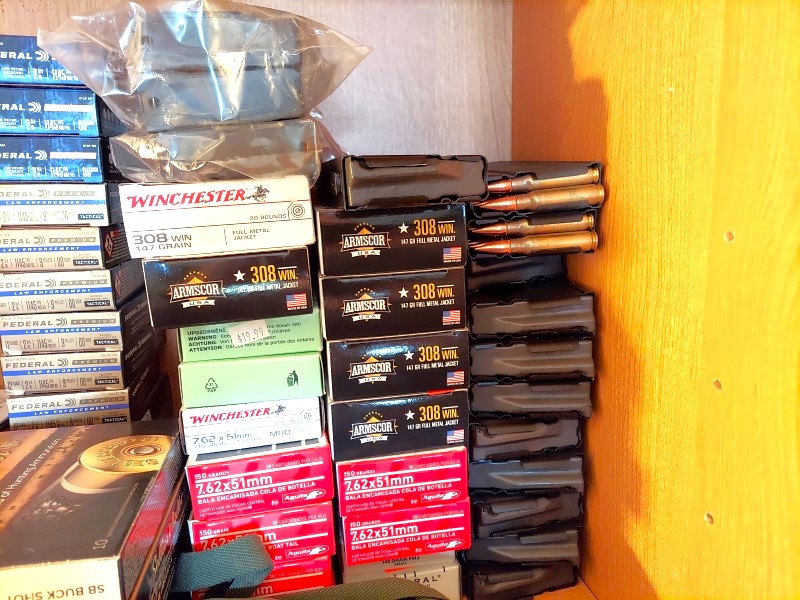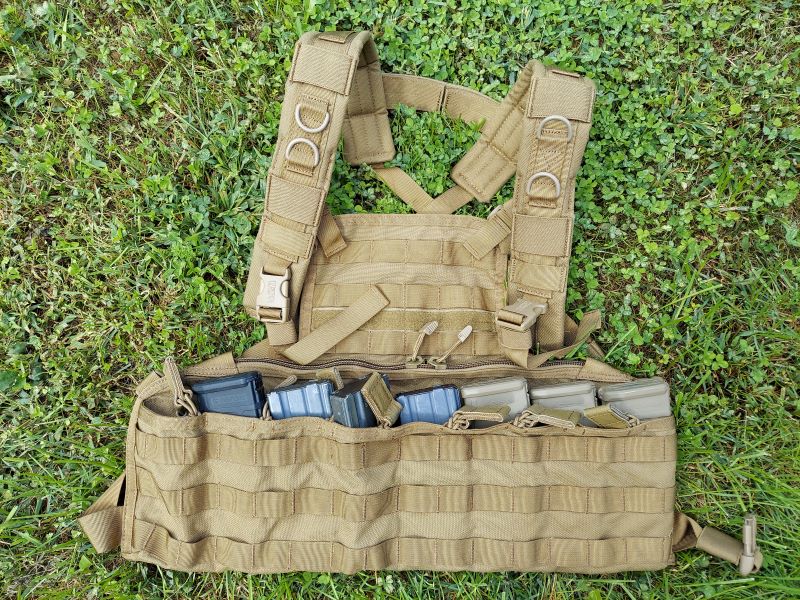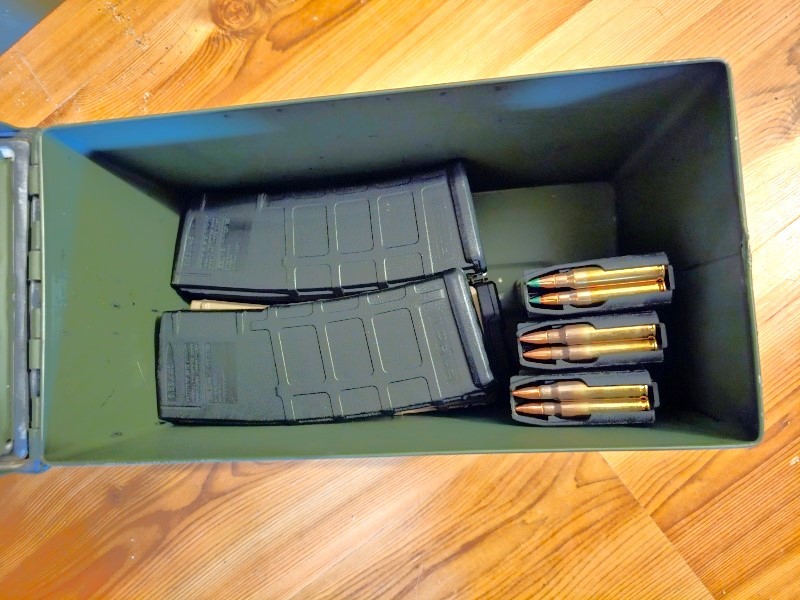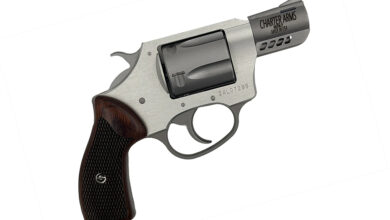Magazine Storage: Safe and Secure Options

Magazines. They’re the heart of so many of our firearms these days. Big ones and little ones, metal ones and plastic ones. Cheap ones and expensive ones. Without them, so many of our guns become single-shot firearms.
It’s enough to make us warm up to the concept of the tube magazines that we see on lever guns and shotguns, isn’t it? No magazines to store or lose around the house. I could get used to that.
This begs a few questions: How should we store our magazines? Are there containers or systems that are better than others? Should they be stored loaded or unloaded? These are all valid questions, but we’ll give you some options here to consider.
To Load Or Not To Load
Is it okay to store our magazines loaded for long periods of time? Like you, I’ve often wondered about this very thing, which prompted me to research the topic at length. Here’s what I found:
It’s safe to load up those mags and store them long-term. Why? Contrary to what we’d intuitively think, the compressed springs don’t get weak from being compressed; they get weak from going from compressed to uncompressed repeatedly, referred to as cycling. In short, the mags wear out when we use them. The accordion effect of loading them and then either unloading them or shooting them dry is what causes the wear. But take heart; even doing that, many magazines can last for an incredibly long time.
Look at AK-47 and M1A magazines. Those things rarely give up the ghost! The magazine bodies are tank-like, so they rarely are damaged enough to have to throw them out. And the springs obviously last for decades.
Not All Mags Are Created Equal
Mags with less robust bodies, such as aluminum M16/AR15 magazines, are more prone to damage. But even those magazines can last for decades. I have old surplus M16 magazines that saw some use during the war in Iraq and are still functioning. A few even had sand from their combat service when the owners gave them to me.
The bottom line is that if you take care of your mags by not stepping on them or running over them with vehicles, most will give you a very long service life, even if you keep them loaded and ready to go at a moment’s notice. Problems can arise when we’re doing full-contact training, dropping the magazines on hard surfaces, stepping on them, etc.
In fact, some people advocate obtaining cheap aftermarket magazines for training at the range, the line of thinking being that it’s better to sacrifice cheaper mags there and keep your higher-quality magazines for when the balloon goes up. And I can’t argue with that.
Personally, I have a number of magazines loaded and ready for each of my magazine-fed firearms. As for pistol magazines, I have fewer of them for my pistols than I have magazines for my rifles. As a result, I have most of my pistol magazines loaded and ready to go.
Safe Storage Methods
I’d mentioned that I keep several magazines loaded and ready for each magazine-fed weapon I have. What do I do with the other magazines?
Wherever magazines are kept, it’s best to treat them like your precious ammunition and store them in a cool, dry place. What you don’t want to do is store them in a damp place like a garage or basement.
Lock and Key
Personally, I’m not overly compelled to lock up my magazines and maintain high security with them. They’re not really dangerous items. However, if there’s room in your gun safe or other secure area, locking them up would go a long way in preventing theft, so it’s not a terrible idea.
Shelves
Although it’s plain and boring, I use a bookshelf to store many of my magazines. I can stack them on the shelf, and it works well. I can see what type of magazine I’m dealing with and whether it’s loaded or unloaded (I keep the same types of mags grouped in different areas of the shelves).

I’ve mentioned that I have a lot of magazines. Some are still in the wrappers from the factory, which I find preserves them fairly well. If I’m in a position where I want to sell or trade some of the magazines for other items (sometimes maybe ammo or other goods), buyers like it when they’re still in the wrappers, as they’re verifiably unused.
Beyond that, the shelves offer a “grab-and-go” ability because no doors or drawers have to be opened up; everything is right there to see, which saves time when prepping for the range or other activities.
Chest Rigs/Ammo Pouches
I have a couple of chest rigs set up for different platforms, and I keep them stocked with loaded magazines. I can pick one up for my weapon of choice and instantly have a combat loadout. This saves time in the event of an emergency, such as, God forbid, having to bug out (which is very unlikely).

Beyond that, I like to be ready to receive unannounced visitors in the event that the company is in the area and decides to drop in at the spur of the moment. In my former lifetime in law enforcement, I kept some recalcitrant people locked up longer than they might have otherwise been because I and my coworkers sometimes busted the bad guys with drugs. As a sign of their appreciation, the bad guys made covenants to look us up after they got out of prison and pay us a visit. These visits, they assured us, would not be filled with sweetness and light, as they made their ill intentions toward us very clear. Consequently, I’m prepared 24/7 in the event that these folks come calling. I mean, it’s the least I can do, and it would be inhospitable of me were I to be unprepared to receive visitors.
Ammo Boxes/Cans
Another great way of storing magazines is to load them up and place them into military ammo cans. If not ammo cans, many stores now sell the civilian version of the ammo cans, as well as other plastic crates and boxes, many of which have compartments inside for sorting out various pieces of gear.

Loading up the magazines before placing them into the boxes/cans does a couple of things. First, the magazines are ready to go the moment I pop the lid open, so speed and readiness are enhanced.
Secondly, this eliminates boxes of ammunition sitting around. Once it’s in the magazines, we can discard the cardboard ammo boxes if we desire, which saves room. Instead of just placing ammunition boxes in the ammo cans, both the ammo and the magazines can be placed inside. Now you have a grab-and-go option should you have to bug out for some reason.

If you decide to go this route, it’s a good idea to place a label on the ammo can so you can tell at a glance which ammo/magazine combination is in there, which will save time. Also, throwing in a desiccant pack will help keep the moisture in the can/box to a minimum, defeating any rust that might want to start.
Sooner Than Later
I mentioned to a friend of mine that many states are currently trying to enact bans on standard-capacity magazines and that he might want to consider stocking up right now, given the reasonable price that many magazines currently sell for. He replied, “If it looks like legislation will go through, I’ll grab some mags then.”
My response was, “It will be too late. So many people will be doing exactly what you’re doing, there won’t be any magazines left. Assuming they will still be available is not a good strategy.”
Many AR-15 and AK-47 magazines sell for around $10 each, so it behooves us to grab some while they’re cheap and insanely available. There may come a day when they’re not. Ask yourself: if they were banned next week, how many do I currently have, and how long would I expect them to last? Ten years? A lifetime? I recall back to the days of the Assault Weapons Ban in the 1990s when Glock magazines were selling for around $125 each.
In Summation
We have many options for storing magazines and ammunition, including gun safes, closets, shelves, ammo cans/boxes, load-bearing equipment, plastic totes, and even custom-made racks and magnetic fixtures. A trip to most stores will reveal a wide variety of plastic storage bins that are awesome for storing just about any household goods these days, including firearms magazines.
The fact that magazines can be stored loaded for a long time just makes our storage options even easier. Personally, I feel that the ammo can/box method allows the most versatility, as it protects the mags and ammo and also allows a lot of mobility.
We’d love to hear from our readers what their favorite magazine storage methods are, so feel free to respond in the comments section!
The post Magazine Storage: Safe and Secure Options appeared first on The Mag Life.
Read the full article here






